

Flipping Through the Pages of Japanese Literature
|
On the topic of Japanese writings, we can trace back the oldest existing literary works to Kojiki (Record of Ancient Matters), and Nihon Shoki (The Chronicles of Japan), which were officially commissioned as government projects and completed in 712 and 720 respectively. The former is a compilation of myths, folklore, and legends among others, while the latter is a more detailed historical record of ancient Japan.
Another significant work that was created during the Nara period is Manyoshu, Japan’s oldest extant anthology of 4,500 poems. Aside from the overwhelming number of poems, this collection is also striking due to the fact that they are written by people of all walks of life, from commoners to emperors. As such, the topics were also very diverse, ranging from the death of a loved one, the imperial family, and even the discovery of a gold mine. Heian period followed, and this was when an aristocratic society took root. It was also a time when many classical Japanese literature was created. One of which is Genji Monogatari (The Tale of Genji), and it is often considered to be the world’s oldest extant full-length novel. The story revolves around the ups and downs of the life of prince Hikaru Genji, and it ambitiously features over 500 characters and spans over 70 years. Another notable work is Makura no Soshi (The Pillow Book), which contains a diverse collection of essays and musings about the nobles then. It should be noted that both works were written by women who served in the court. During the periods that followed, including Kamakura, Muromachi and Azuchi-Momoyama, there was a rise in war, power struggle and feudal warlords. Thus, there was an increase of literature that centred on war, such as Heike Monogatari (The Tale of the Heike) which depicts the rise and fall of the Taira clan, including their wars with the Minamoto clan. There was also a number of reflective writings by Buddhist monks. For example, Hojoki (An Account of My Hut) illustrates the concept of impermanence, while Tsurezuregusa (Essays in Idleness) reflected on life and death. Renga (linked verse) and Noh theatre also developed significantly during this time. Peace came to Japan in the Edo period, and literature began to function as a means of social intercourse. An important development was the perfection of haiku as a condensed poetry of 17 syllables by Basho Matsuo. The well-known poet is famous for his travel accounts. As for prose, Saikaku Ihara became a prominent author who realistically portrayed the life of Osaka merchants, and was the creator behind the genre of “floating world”. Another figure was Monzaemon Chikamatsu, who wrote plays for puppet theatre, which was in fact more popular than Kabuki in the 18th century. With the Meiji period, there was an introduction of Western literature to Japan, and authors would also bring back influences from their studies abroad. The leading names that are well-known today include Ogai Mori and Soseki Natsume, the former having introduced Romanticism to Japan. Following them, Kafu Nagai, Junichiro Tanizaki, and Ryunosuke Akutagawa emerged in the creative scene. In fact, Ryunosuke Akutagawa was nurtured by Soseki Natsume, and regarded as the father of Japanese short story, his most famous one being Rashomon. As for the postwar period, writers such as Yukio Mishima, Kobo Abe, Osamu Dazai were active. The former becoming one of the first Japanese writers to be known abroad then. Eventually, Yasunari Kawabata became the first Japanese to win the Nobel Prize for Literature in 1968. Other Japanese authors who have won the said prize are Kenzaburo Oe in 1994, and Ishiguro Kazuo in 2017. Japanese literature is now translated into many languages and has thus gained popularity around the globe. For example, authors like Haruki Murakami, Yoko Ogawa, and Banana Yoshimoto are famous within and outside of Japan, with some of their works having been adapted into films and plays. Moreover, with the development of Internet and mobile technology, online novels have become popular, as well as light novels that are commonly accompanied with manga illustrations. From classic poetry and plays, to modern prose, Japanese literature is now loved by readers from all over the world. Do you have any favourite titles which you would recommend? |
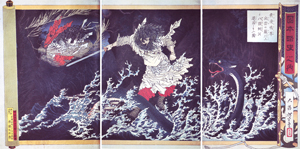 Mythology about Susanoo no Mikoto slaying Yamata-no-Orochi (© Yoshitoshi Tsukioka, Public domain, via Wikimedia Commons) 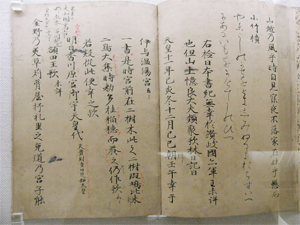 A complete poem from Manyoshu (© Tokyo National Museum, CC BY-SA 3.0, via Wikimedia Commons) 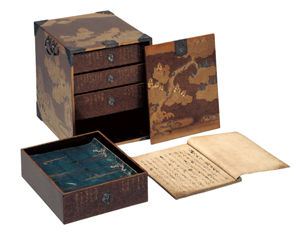 13th century manuscript of Genji Monogatari © Hosa Library, City of Nagoya 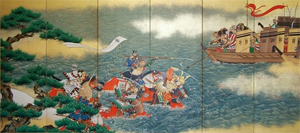 Heike Monogatari - Vanguard at Uji River (Watanabe Art Museum) (© Yuga Nemoto, Public domain, via Wikimedia Commons) 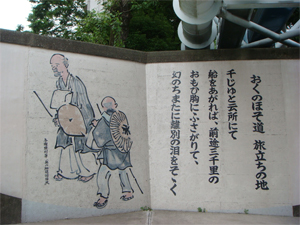 Basho Matsuo's most famous travelogue is "Oku no Hosomichi" (The Narrow Road to the Interior) © Japan Up Close 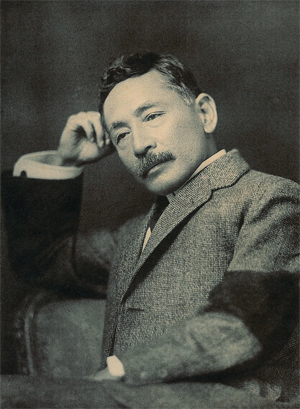 Soseki Natsume (© Kazumasa Ogawa, Public domain, via Wikimedia Commons) 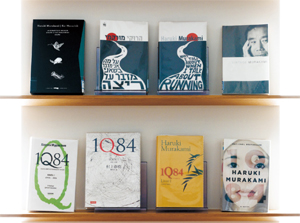 © Osamu Kurihara, CHUOKORON-SHINSHA, INC. |
Resources
|
“Learn About the World’s Oldest Full-Length Novel”. 2022. Web Japan. https://web-japan.org/niponica/niponica33/en/feature/index.html. Keene, Donald. 2024. “Japanese Literature”. Britannica. Accessed 20 June. https://www.britannica.com/art/Japanese-literature/Origins. Kanzaki, Masahide. 1996. “History of Japan’s Literature”. The Web KANZAKI. Accessed 20 June. https://www.kanzaki.com/jinfo/jliterature.html. “Japan Fact Sheet: Literature”. 2020. Web Japan. Accessed 20 June. https://web-japan.org/factsheet/en/pdf/e29_literature.pdf. |
|
Japan Creative Centre 4 Nassim Road, Singapore 258372 +65 6737 0434 / jcc@sn.mofa.go.jp https://www.sg.emb-japan.go.jp/JCC/ Nearest parking at Orchard Hotel & Delphi Orchard |
 |